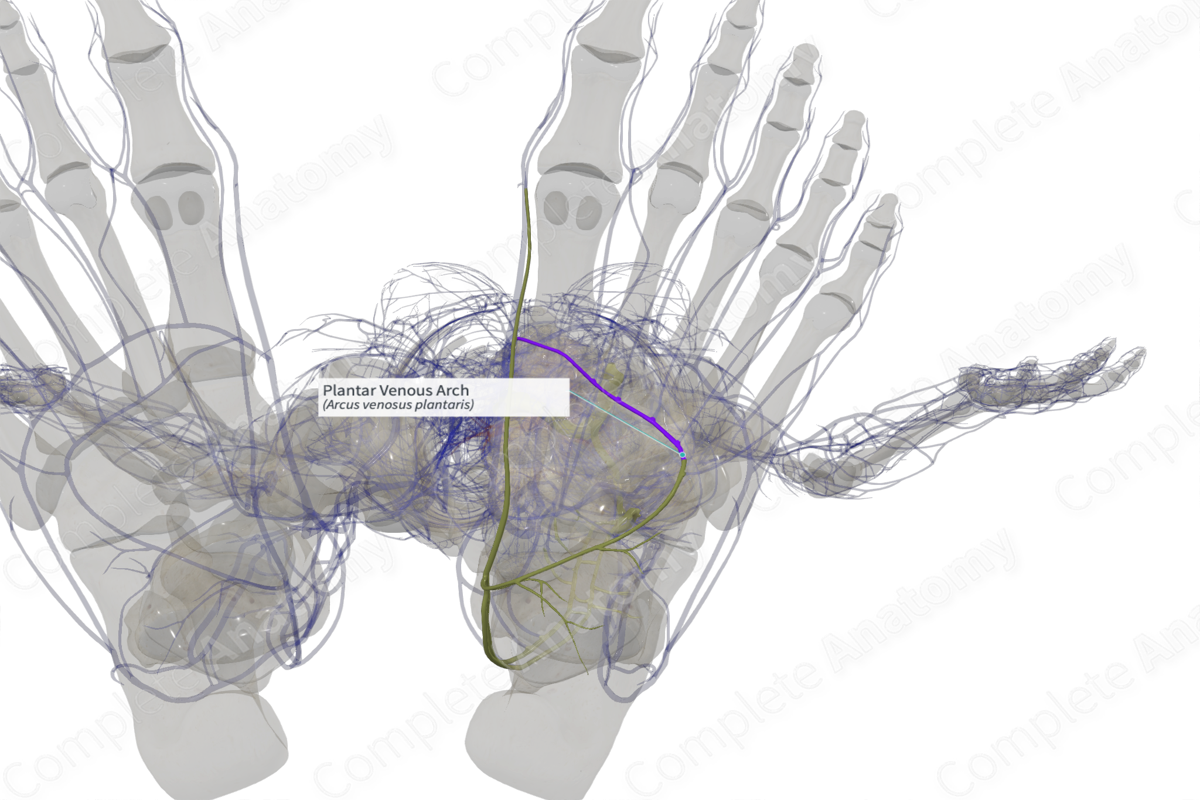
Quick Facts
Origin: Union of the metatarsal veins.
Course: Proximal end of the first interosseous space to the base of the fifth metatarsal bone.
Tributaries: Plantar metatarsal veins.
Drainage: Foot.
Related parts of the anatomy
Origin
The plantar venous arch arises from the union of the metatarsal veins.
Course
The plantar venous arch, accompanied by the plantar arterial arch, extends from the first interosseous space to the base of the fifth metatarsal bone (Ricci et al, 2014). It is drained by the medial and lateral plantar veins.
Tributaries
The plantar venous arch receives the plantar metatarsal veins, which are connected to the dorsal metatarsal veins via intercapitular veins, thus, connecting the plantar venous arch with the dorsal venous arch.
Structures Drained
The plantar venous arch drains blood from the digits of the foot and surrounding plantar muscles.
References
Ricci, S., Moro, L. & Antonelli Incalzi, R. (2014) The foot venous system: anatomy, physiology and relevance to clinical practice. Dermatol Surg, 40(3), 225-33.
Learn more about this topic from other Elsevier products
Plantar Plate

The plantar metatarsophalangeal ligament (plantar plate or plantar pad) is a cup-shaped, intra-articular covering of the inferior aspect of the metatarsophalangeal joint (MPJ).




